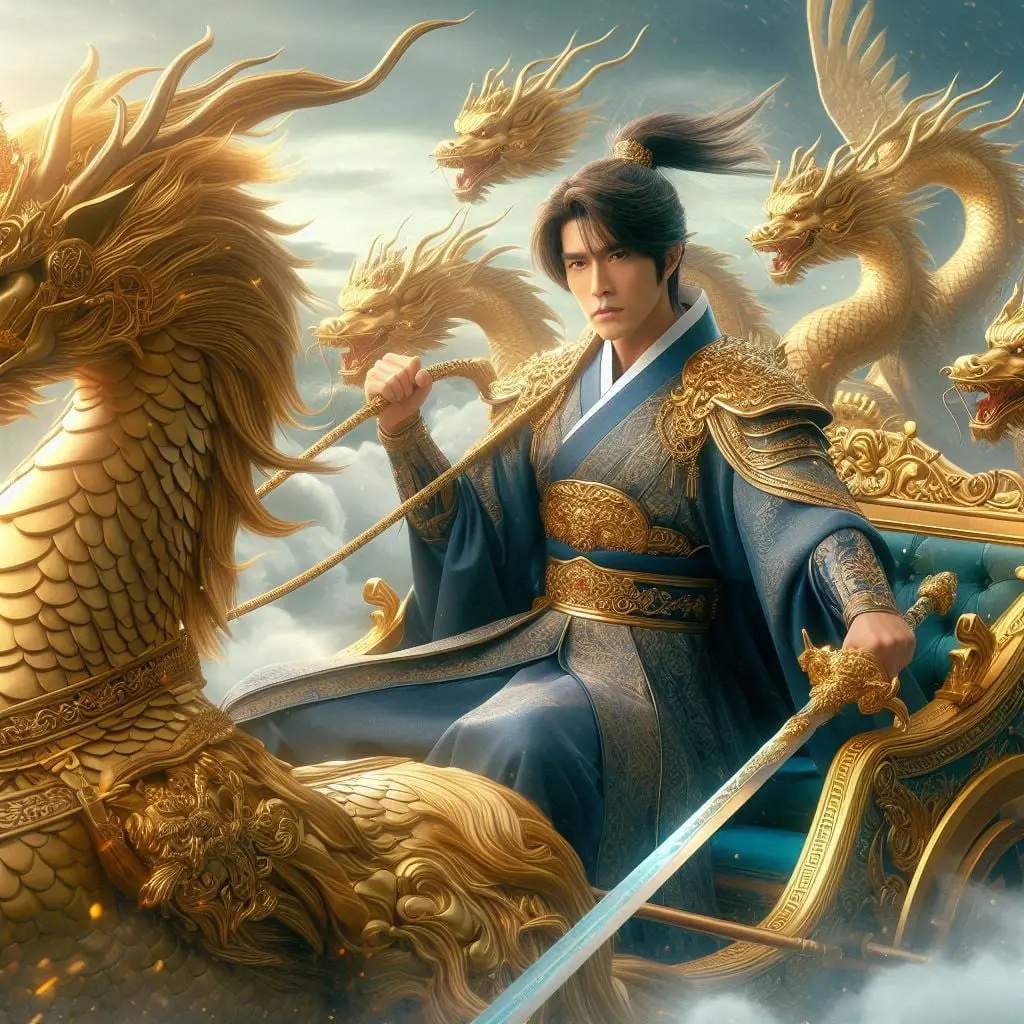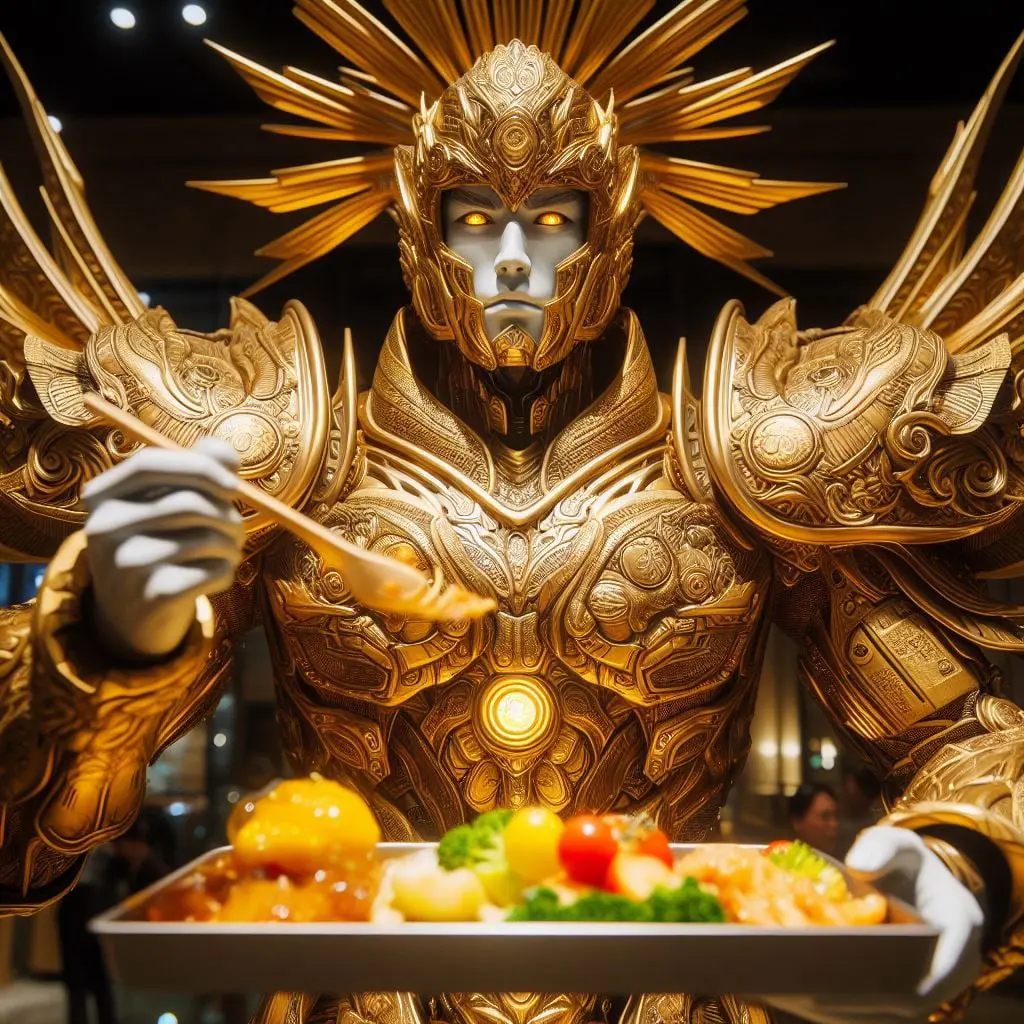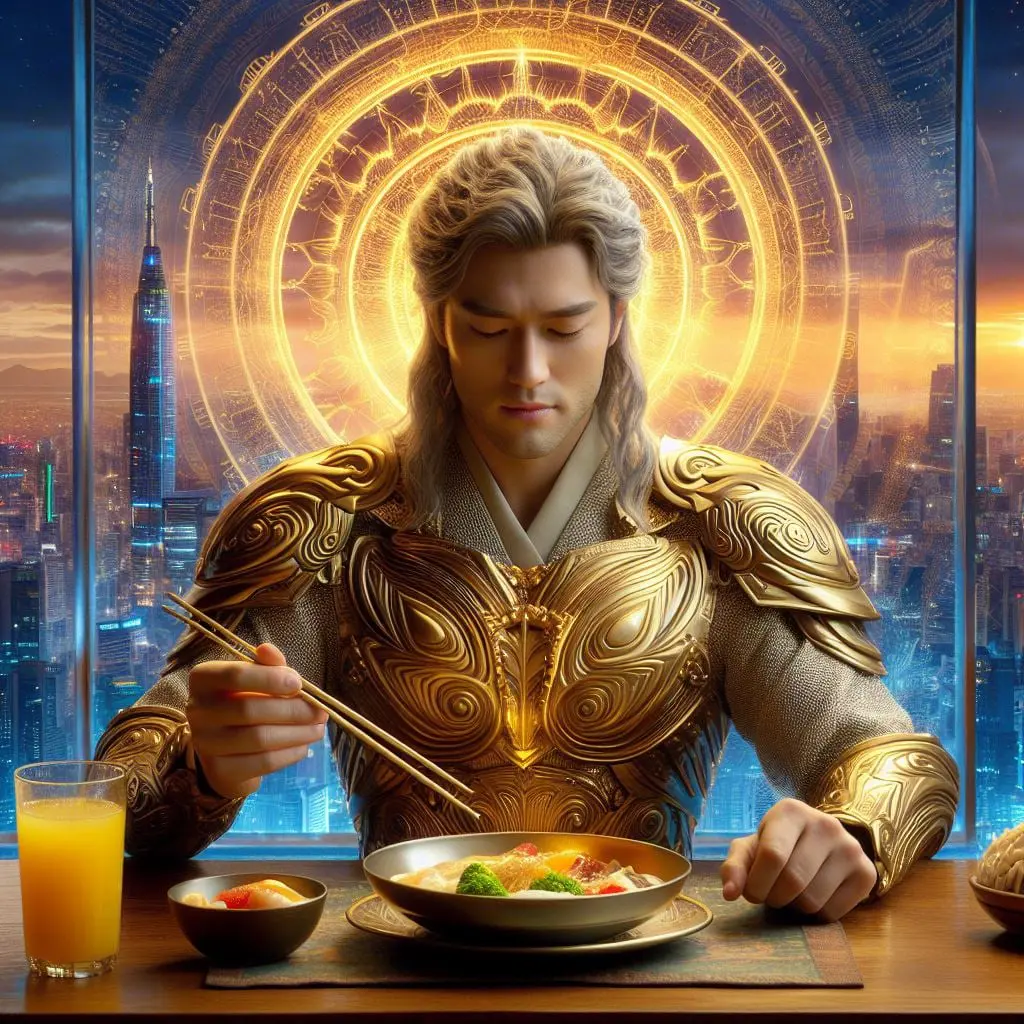
Article by Gil "hannaone"
© Copyright 2024. All rights reserved.
Images created by AI
Haemosu, Son of Heaven
Introduction to Haemosu
Haemosu, the sun god of Korean mythology, is often depicted riding a chariot drawn by five dragons, symbolizing his dominion over the sun.
As per the legend, Haemosu became infatuated with Yuhwa, the daughter of the river god Habaek. The two fell in love, but due to certain conflicts and disagreements, particularly with Yuhwa’s father, their relationship became strained, leading Yuhwa to escape.
As a solar deity, he embodies themes of light, power, and celestial significance in Korean mythology. His relationship with Yuhwa and their son, Jumong, intertwines these themes with those of love, destiny, and the foundational myths of the Goguryeo people.
Mythical Origin of Haemosu
As legend goes, Haemosu was the offspring of Hwanung, son of the Lord of Heaven in ancient Korean beliefs. It is said that he was born from a union between Hwanung and a woman who had been been a bear. Throughout generations, tales of Haemosu's divine heritage and great feats have been told, making him an iconic and beloved character in Korean folklore.
Rising and Setting of the Sun
Haemosu, riding in his chariot Oryonggeo, would descend from the heavens every morning to attend to the affairs of the people. And when evening arrived, he would ascend back into heaven. This cycle of coming down and going back up symbolizes the daily journey of the sun rising and setting.
Haemosu and Yuwha
Legend has it that Haemosu was captivated by Yuhwa, the daughter of the river god Habaek. The two became enamored with each other, but various conflicts and disputes, especially with Yuhwa's father, put a strain on their relationship which ultimately led to Yuhwa's escape.
Yuhwa fled and found refuge in the palace of King Geumwa from the Eastern Buyeo kingdom, where she became pregnant after being exposed to sunlight. It was believed that this sunlight contained the essence of Haemosu. From this pregnancy, an egg was hatched, giving birth to Jumong, who would later be known as King Dongmyeong and become the founder of the Goguryeo kingdom.
Powers and Abilities
Haemosu was revered for his ability to wield the power of the sun at his command. He was renowned for his incredible strength, bravery, and unparalleled mastery of archery. Additionally, he was a skilled swordsman who wielded a magical blade infused with the light of the sun.
In certain variations of the myth, it's said that he could also transform into a powerful dragon, which he utilized to safeguard Buyeo and its people against their adversaries.
Haemosu had a remarkable ability to shapeshift, not just into dragons as many believed. In one story, Habaek challenges Haemosu to a duel on the shore in a fit of rage, determined to prove that Haemosu is not truly the son of the Celestial Emperor. As Habaek transformed into a carp, Haemosu morphed into an otter and chased after him. When Habaek turned into a deer, Haemosu became a wild dog. And when Habaek took on the form of a pheasant, Haemosu turned into a hawk and launched an attack.
Legacy
The legacy of Haemosu, a legendary leader in ancient Korea, lives on through his son Jumong. Jumong's impact on Korean history is still felt today, as his descendants founded the Goguryeo kingdom, one of the three prominent kingdoms in ancient Korea.
The legend of Haemosu has been passed down through generations, and continues to be depicted in traditional Korean forms of art such as literature, poetry, and artwork. In present day, he is revered as an emblem of courage and perseverance in Korean society.
He also likes restaurants and time travel...








